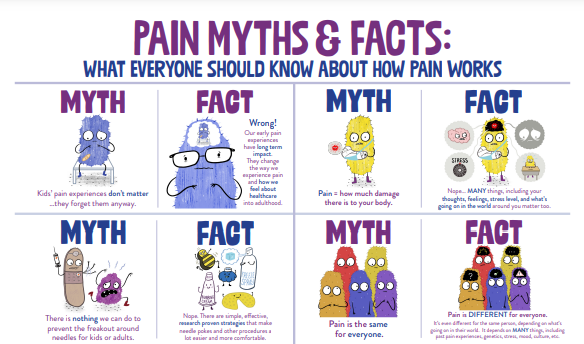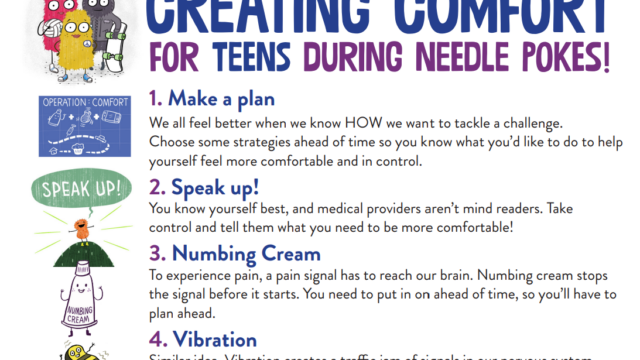Keep Calm and Carry On: A Pediatric Headache Specialist Shares Her Tips for Helping Kids Feel Better
As a pediatric headache specialist, I love teaching kids about headaches and partnering with them to improve their pain. Seeing kids get back to what they love (sports, music, hanging out with friends) is so rewarding! Let’s walk through some helpful information about headaches.
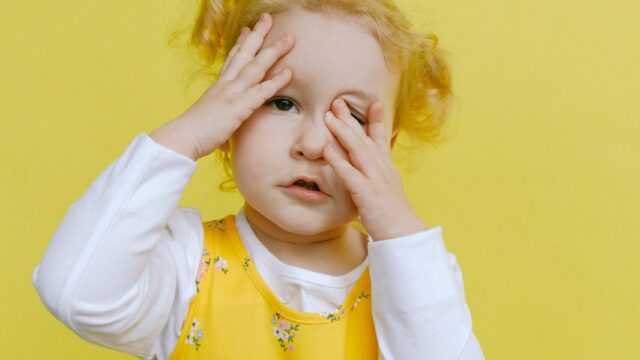
Jennifer Dilts, DO,
February 2, 2021
Babies & Toddlers (0-2) Acute Pain Chronic Pain English Pain Management
Share this:
As a pediatric headache specialist, I love teaching kids about headaches and partnering with them to improve their pain. Seeing kids get back to what they love (sports, music, hanging out with friends) is so rewarding! Let’s walk through some helpful information about headaches.
Headaches are common!
They happen a lot more often than most people think. More than 75% of kids report a significant headache by age 15. When we look specifically at migraine headaches, 11% of children between the ages of 5 and 15 have migraines, and 28% of teens between the ages of 15 and 19 have migraines (Hershey 2005). With migraines, pain is typically severe enough to interfere with functioning (school, play, or other activities). Migraines are often associated with nausea and/or vomiting. Kids are often sensitive to light, sound, or movement during migraines.
What causes headaches?
It’s complicated. Headaches are affected by lots of things. Stress, sleep, weather changes, hydration, nutrition, and exercise can all influence headaches.
Genes are a big factor.
If one parent has migraines, a child has a 50% chance of also having migraines. This number jumps to around 75% if both parents have migraines.
Good news? There are MANY ways to help.
Because so many factors affect headaches, that also means that there are many things that you and your child can do to decrease and prevent headache pain.
Develop good coping strategies for stress.
We all get stressed, and for those of us who are prone to headaches, we get more headaches when we’re stressed. Just like you can strengthen your arm muscles by lifting weights, you can train your brain to get better at relaxation. Practice relaxed breathing, progressive muscle relaxation, guided imagery, or self-hypnosis for a few minutes each day. For a few of my favorites, click here and here.
The more you practice, the more effective you will be at decreasing stress, and this can decrease headaches. It’s great to practice before bed each night, when you may already be starting to feel relaxed. Once you develop these skills, you can use them any time you feel stressed (at school, before a big game, etc).
Prioritize sleep.
Our brains love consistency! Keep everything the same from day to day, at least as much as possible. Go to bed at the same time each night and wake up at the same time each morning. Keep screens out of the bedroom, and develop a relaxing routine for 30 to 60 minutes before bedtime each night. Keep active during the day, and avoid naps.
Drink lots of water!
Aim for at least 64 ounces each day (more if you’re exercising a lot!).
Eat healthy foods, and don’t skip meals.
Again, consistency is good! Eat at the same times each day, and eat healthy foods throughout the day. This helps to keep blood sugar stable, which may prevent headaches. Limit caffeine intake to 1 to 2 times per week or less.
Exercise!
This releases endorphins, our bodies “feel good” hormones that decrease pain and stress.
When should we go see a doctor?
If headaches are causing your child to miss school or activities, or if they occur once a week or more, make an appointment with your child’s primary care provider to discuss headaches. Your child may benefit from a pediatric migraine action plan.
Don’t wait to take action.
When your child has a headache, it is not a good time for “wait and see.” Treat headaches early with rescue medications. Medications like ibuprofen work best if your child takes them as soon as a headache starts. Make sure to keep some medication at school too. Your child’s physician may recommend that your child rests in a dark quiet room for 30 minutes after taking rescue medication.
A strong offense is a good idea.
While rescue medications are good once a headache starts, preventive medications and supplements help keep them from happening in the first place. They can take 8 to 12 weeks to be fully effective. If your child’s primary care provider prescribes one, be sure to take it every day as prescribed.
Think outside the box.
There are lots of ways to treat headaches in addition to medications and supplements. Hypnosis, acupuncture, biofeedback, cognitive behavioral therapy, and neurostimulation devices are all evidence-based ways to treat headaches. The more tools in your toolkit, the better!
It’s powerful to know that while headaches are nobody’s fault, there are many ways to take control over the pain experience. Partner with your child’s primary care provider to find the medications and additional treatments that work best for your child. You’ve got this!
To learn more about headaches and how to make healthy lifestyle changes, check out The Headache Relief Guide.
You May Also Be Interested In
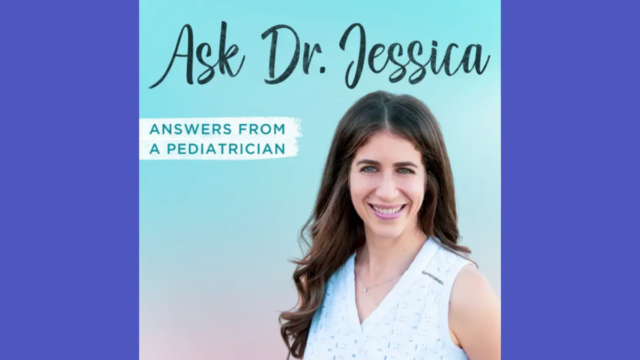
Podcast
Ask Dr. Jessica podcast: How to reduce fear and anxiety around vaccines? with Jody Thomas
This episode is for all you parents, caregivers, and healthcare providers out there who want to make vaccinations a little less scary for the little ones.
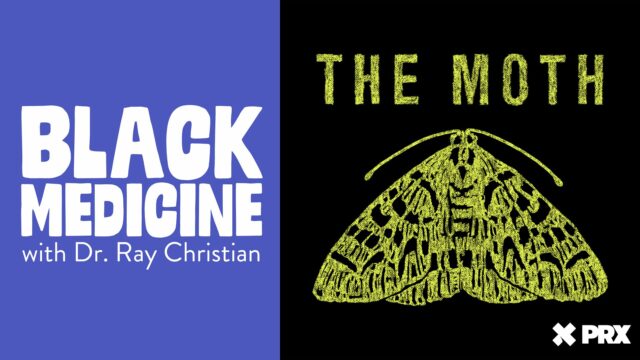
Podcast
Black Medicine with Dr. Ray Christian
Explore the rich tapestry of Black medical history with Dr. Ray Christian as he shares captivating narratives revealing historical legacies and personal anecdotes.
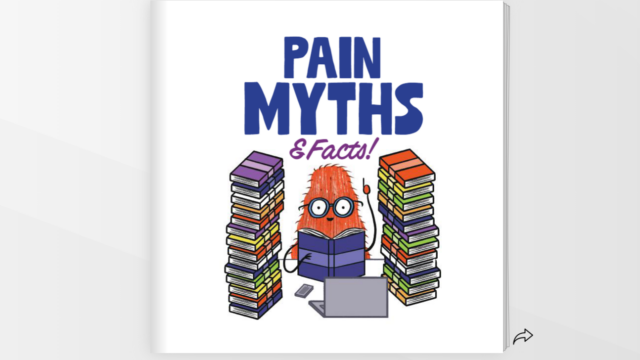
Book
Pain Myths & Facts E-Book
There's a lot of outdated thinking about pain floating around, but thanks to research, we now know better! It turns out that what kids, parents, and providers think they know about pain can sometimes hold us back from making things better. So let's dispel these misconceptions with accurate, evidence-based information and brighten things up with some solid facts!
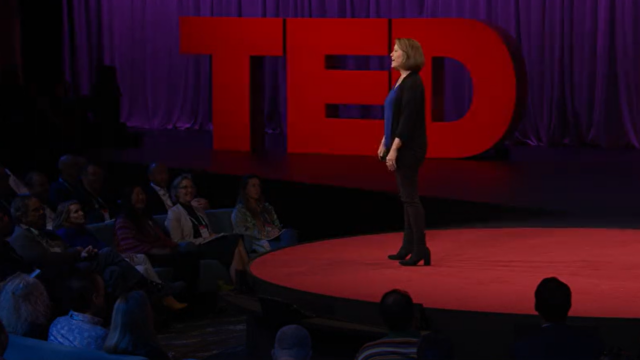
Video
How to hack your brain when you're in pain
"Have we misunderstood pain?" Researcher and physician Amy Baxter unravels the symphony of connections that send pain from your body to your brain, explaining practical neuroscience hacks to quickly block those signals. Her groundbreaking research offers alternatives for immediate pain relief — without the need for addictive opioids.

About the Author
Dr. Jennifer Dilts is the director of Children’s Mercy Kansas City’s Comprehensive Headache Clinic and an associate professor at the University of Missouri-Kansas City. She is board-certified in pediatrics, headache medicine, and medical acupuncture. Her pediatric acupuncture research has won several grants and national awards. Additionally, she has designed a curriculum to teach optimal procedural pain and anxiety management to pediatric residents. As the mom of three daughters, she feels passionately about empowering kids before and during procedures. She also loves talking with teenagers about headaches.
